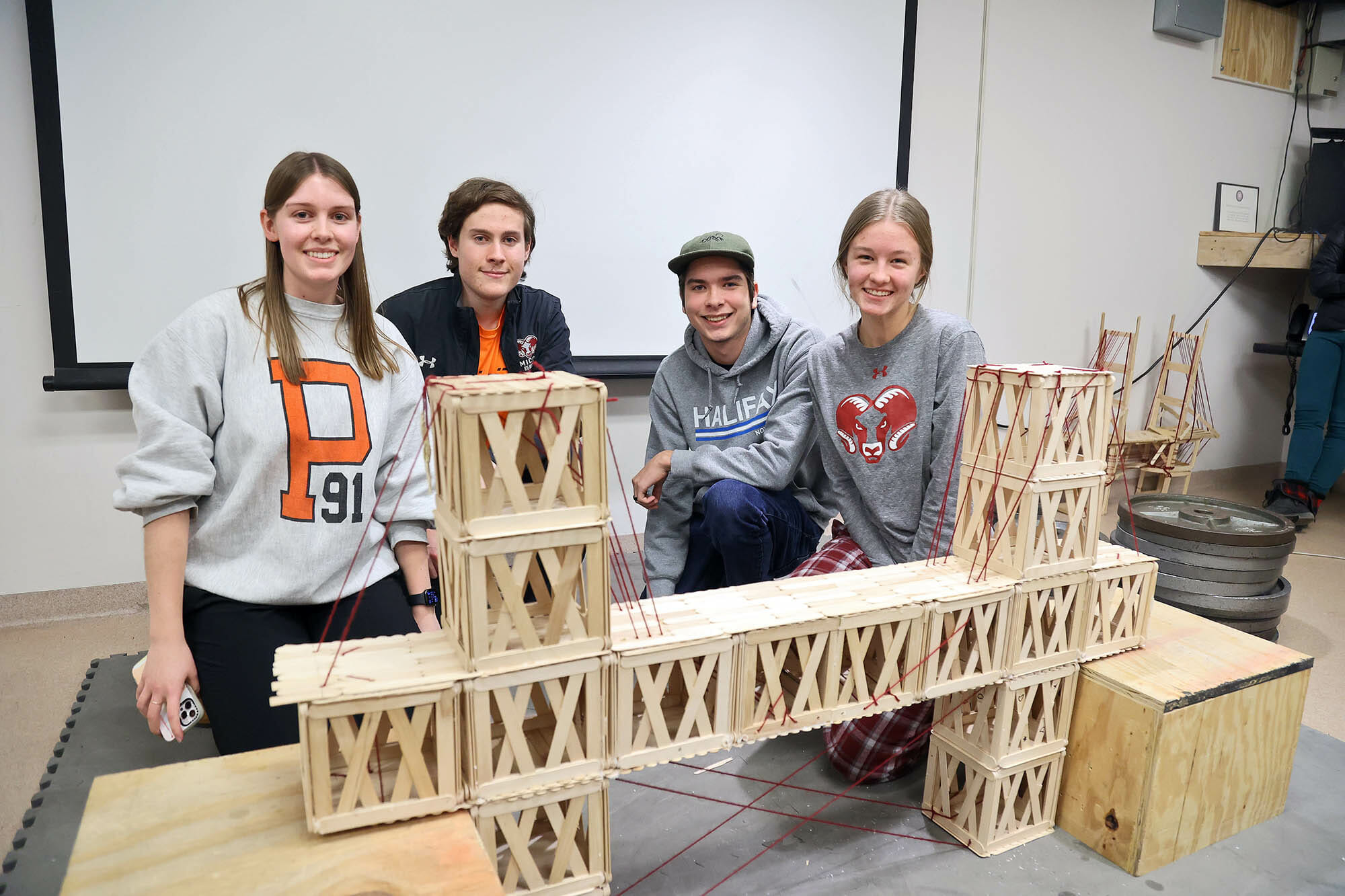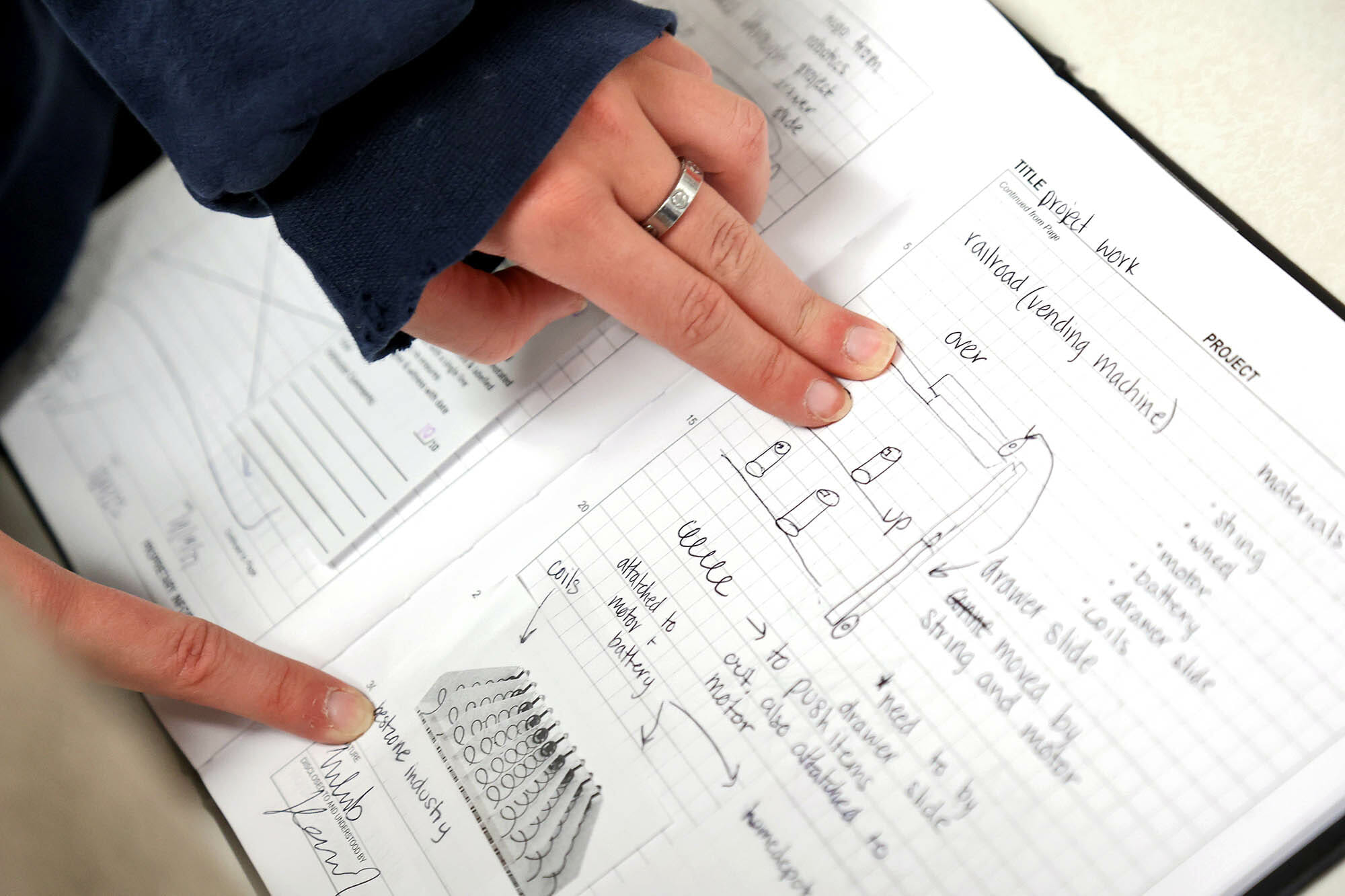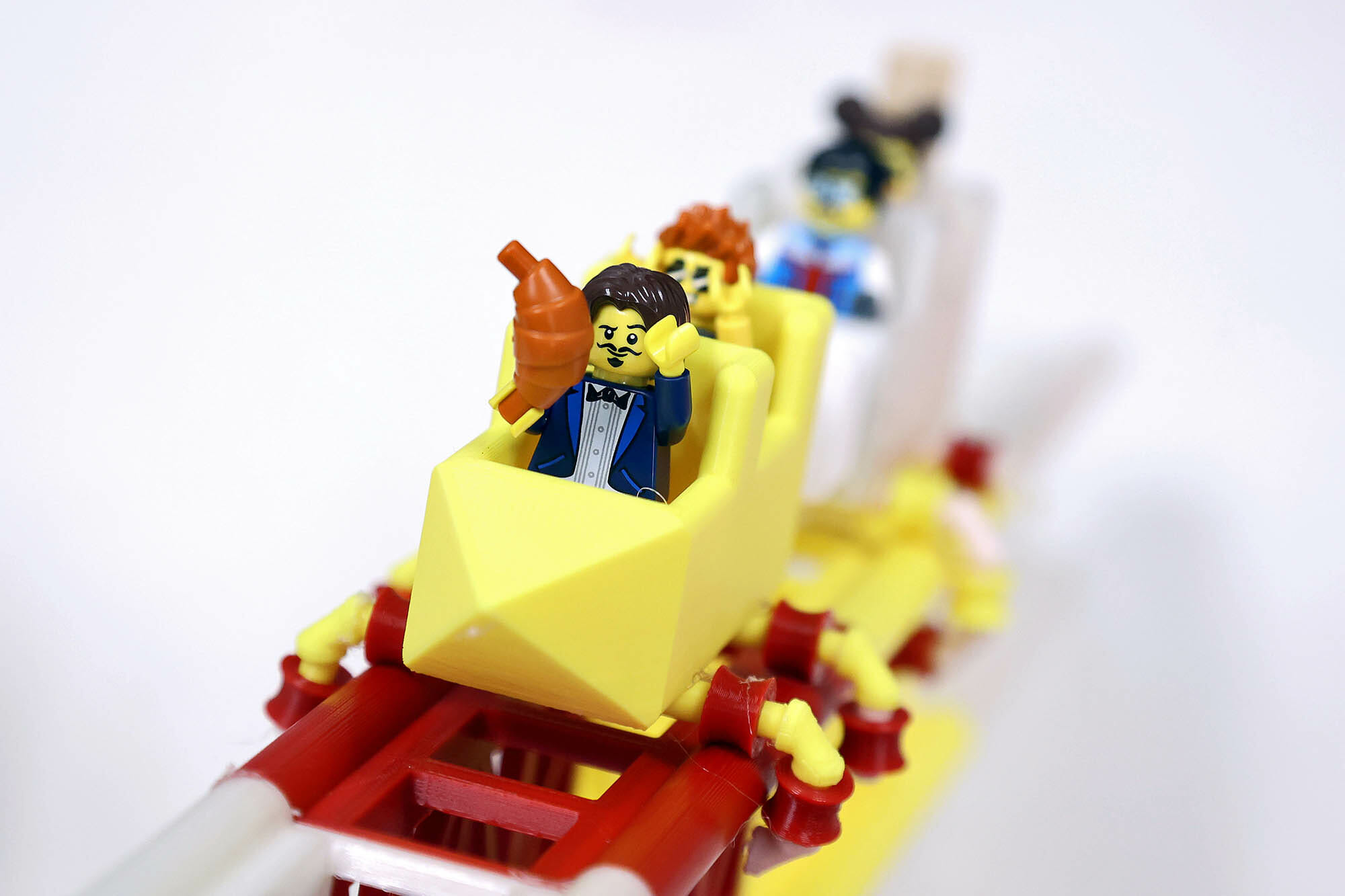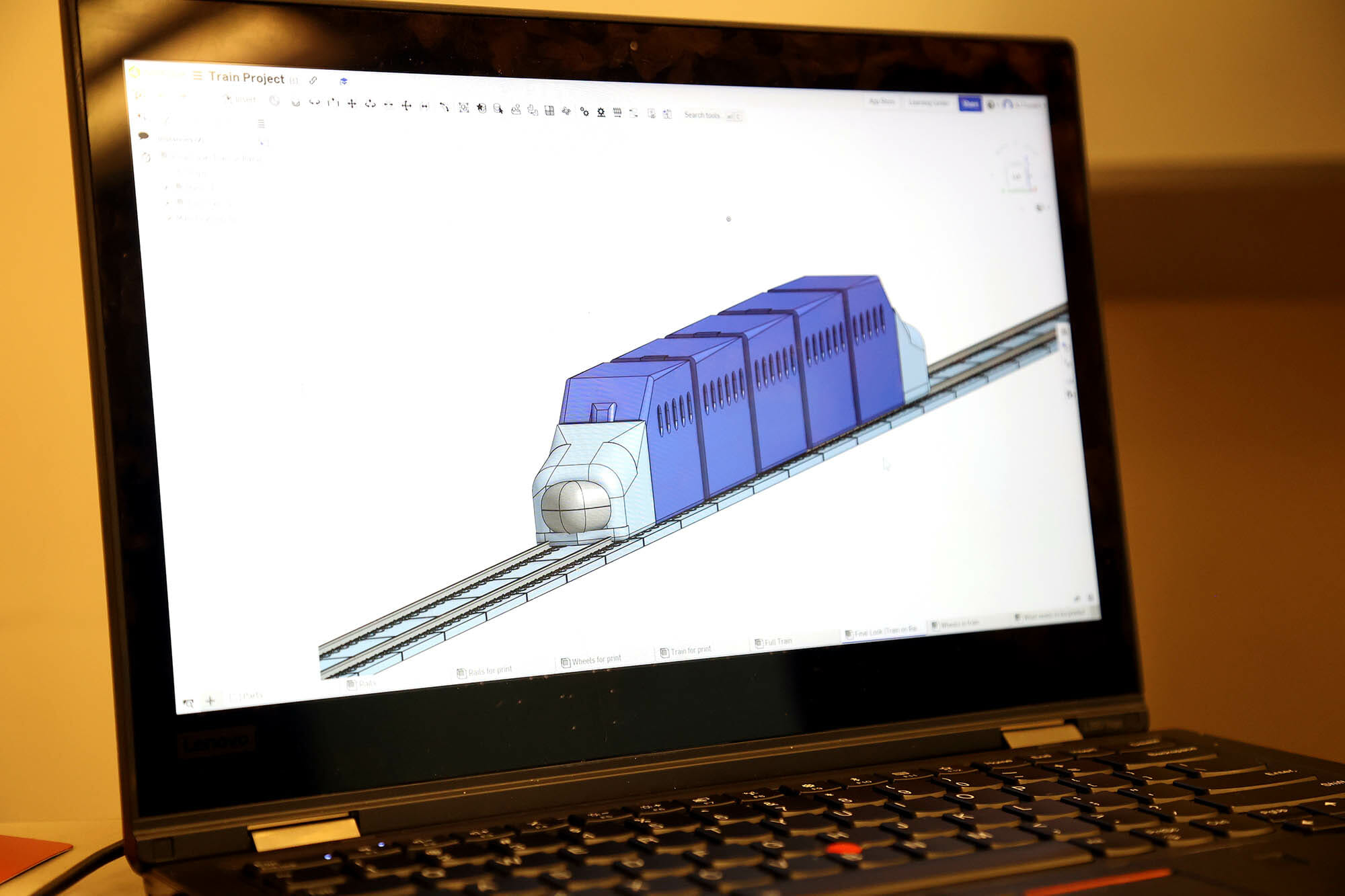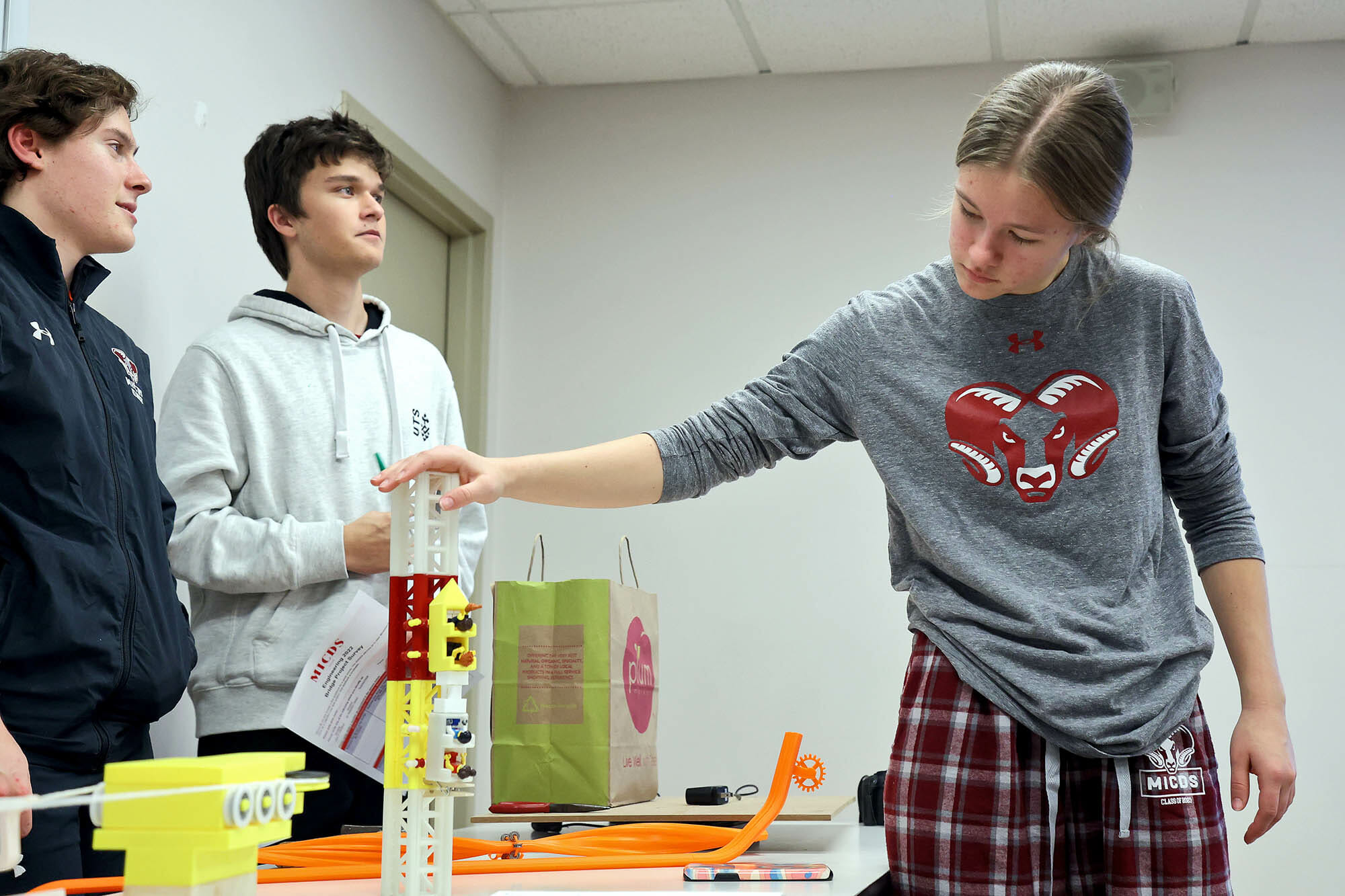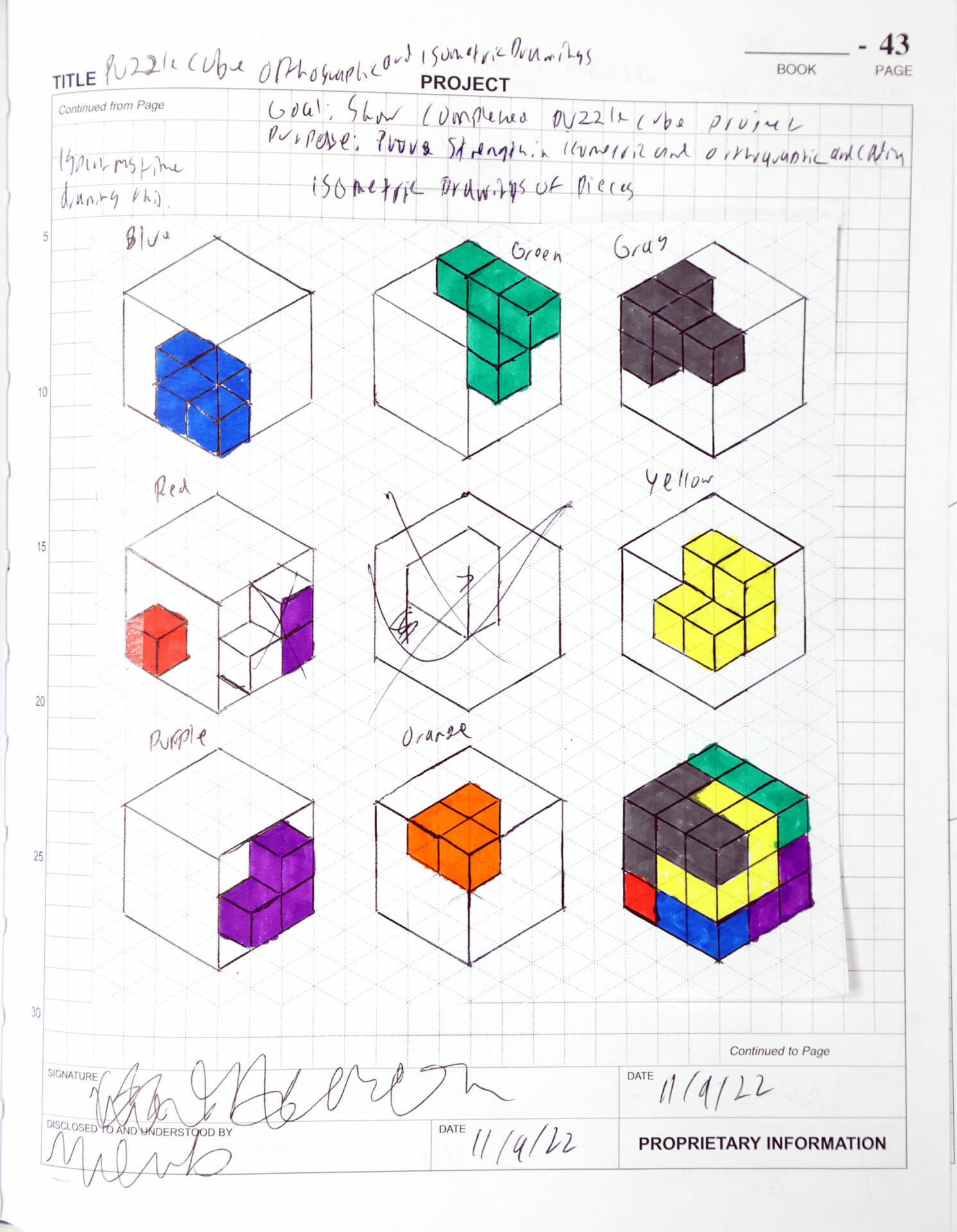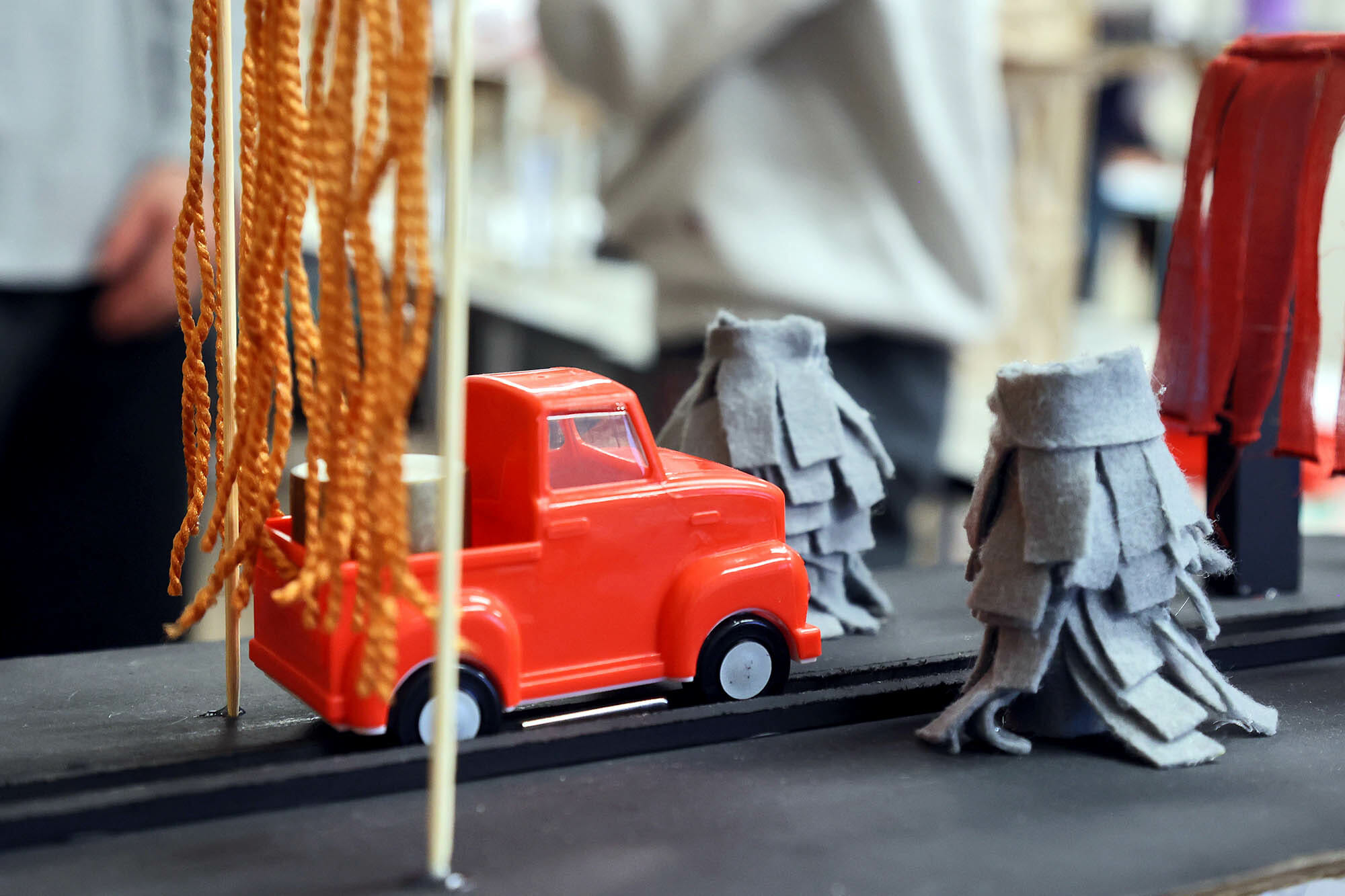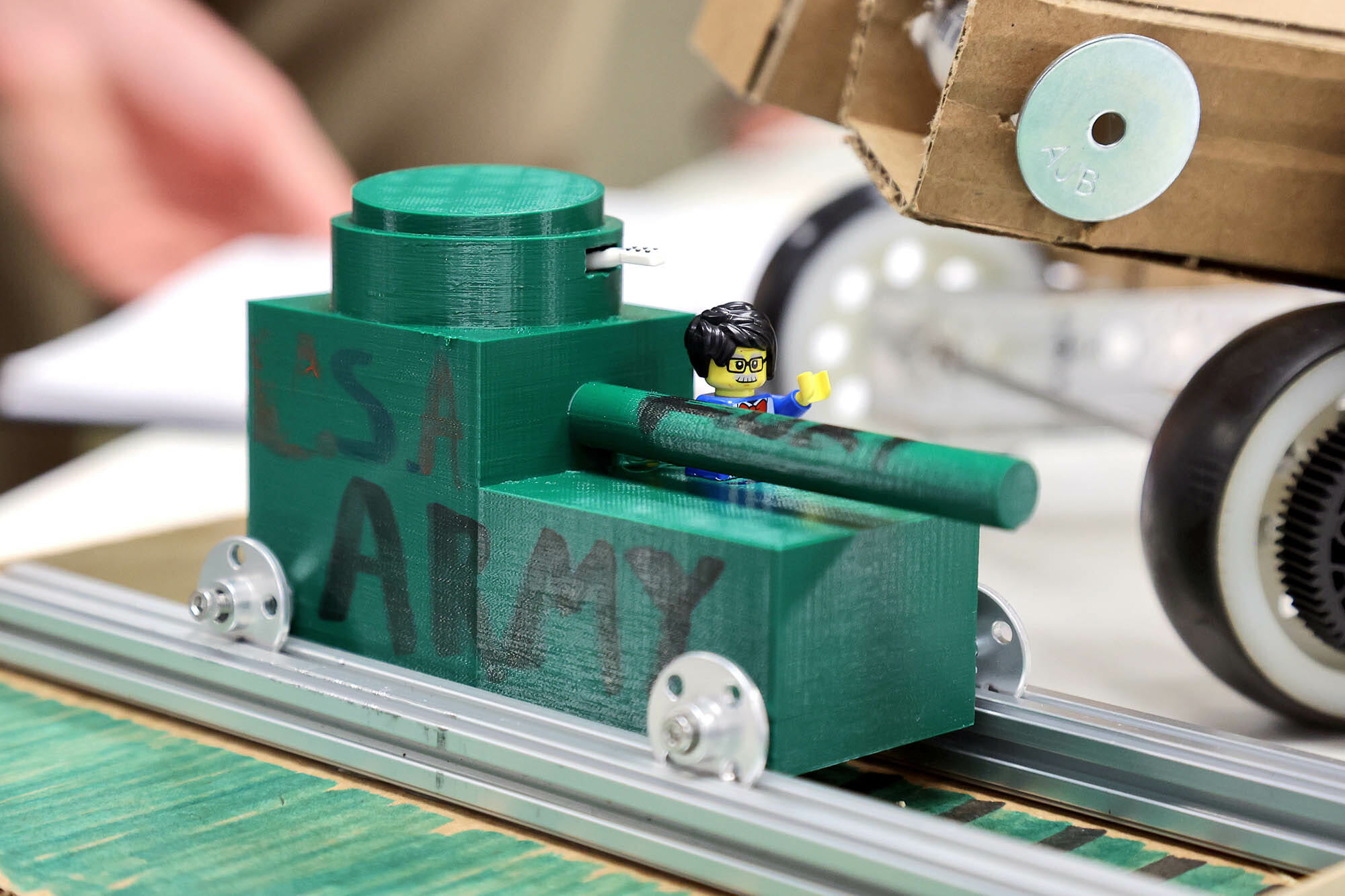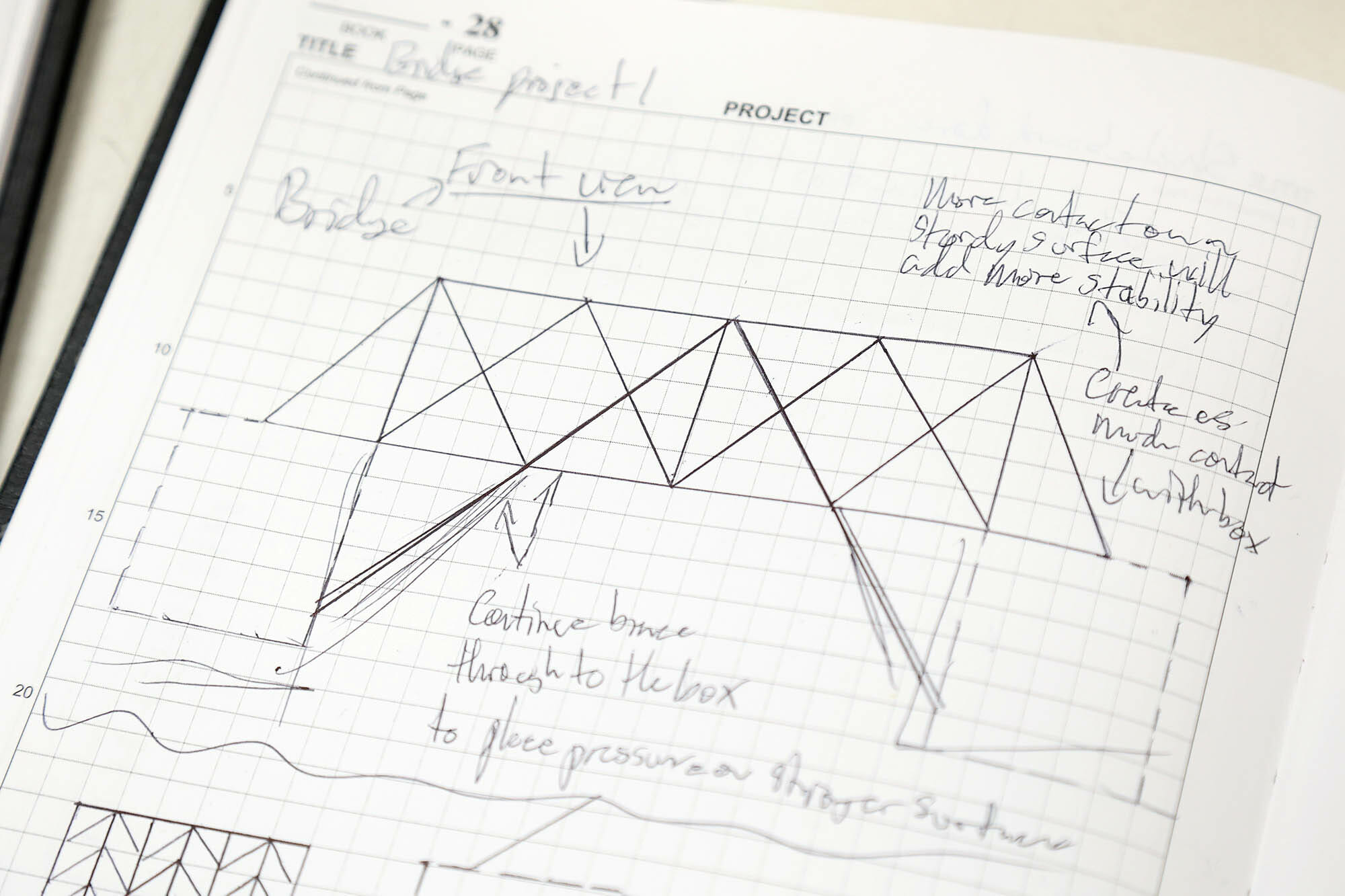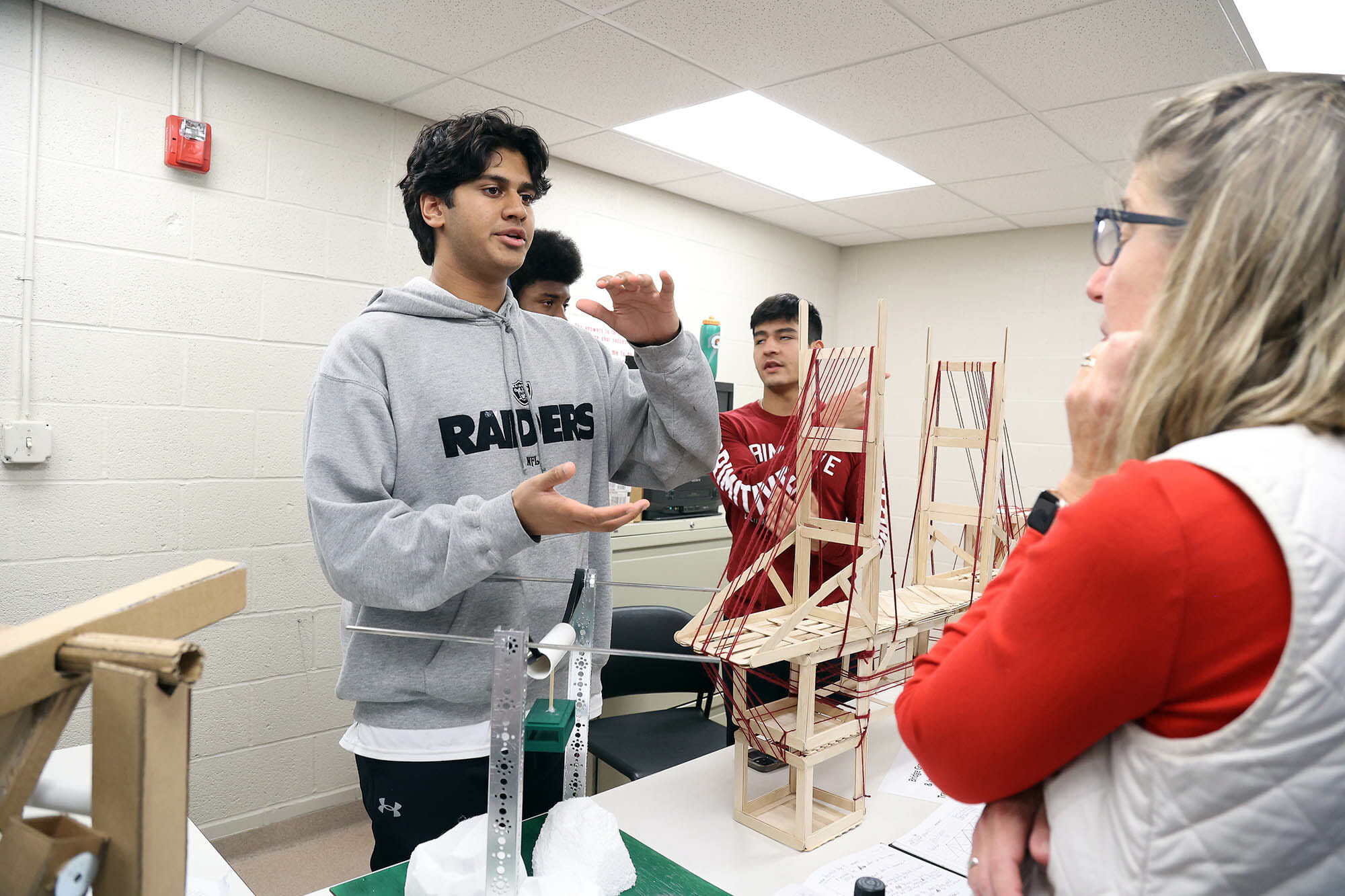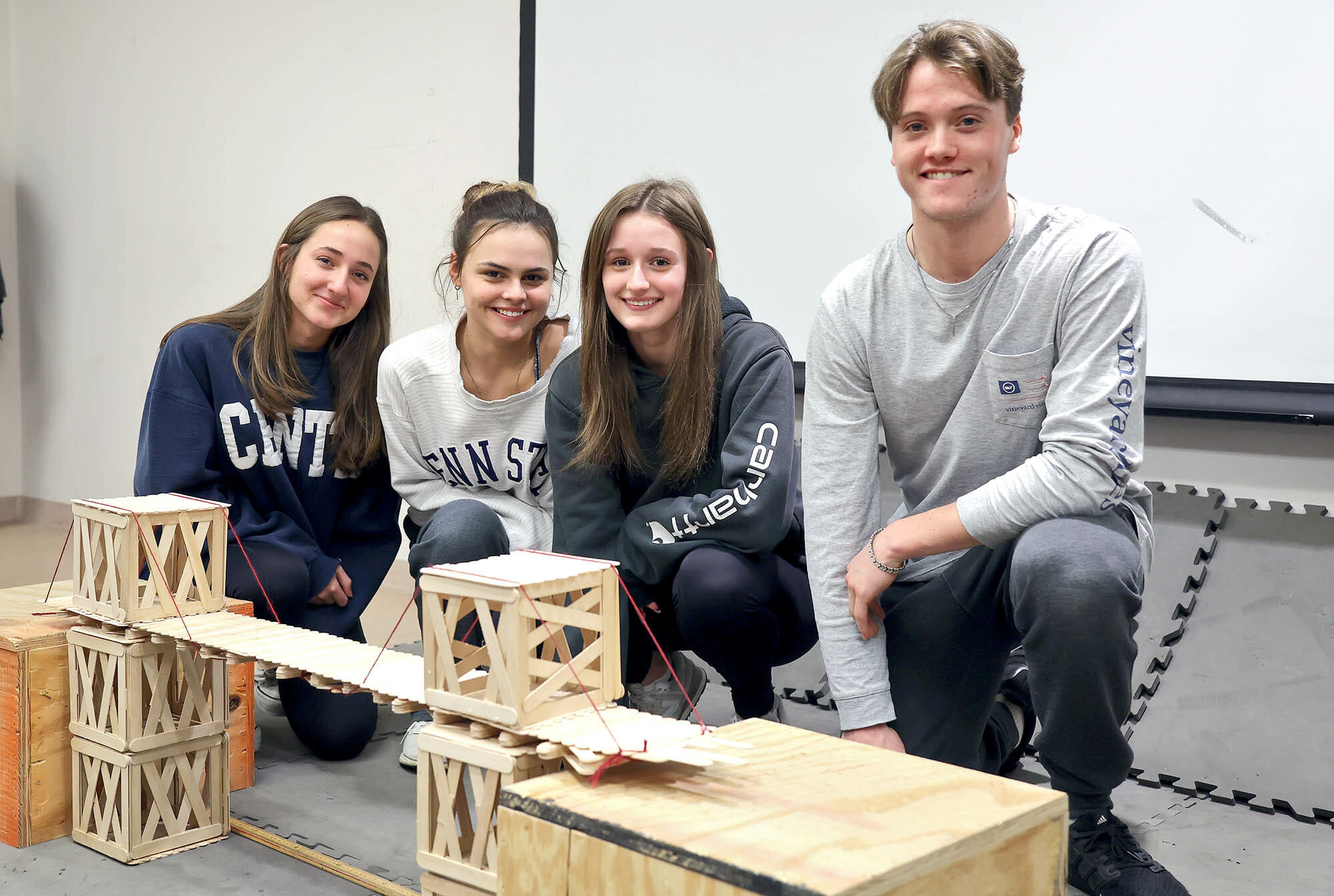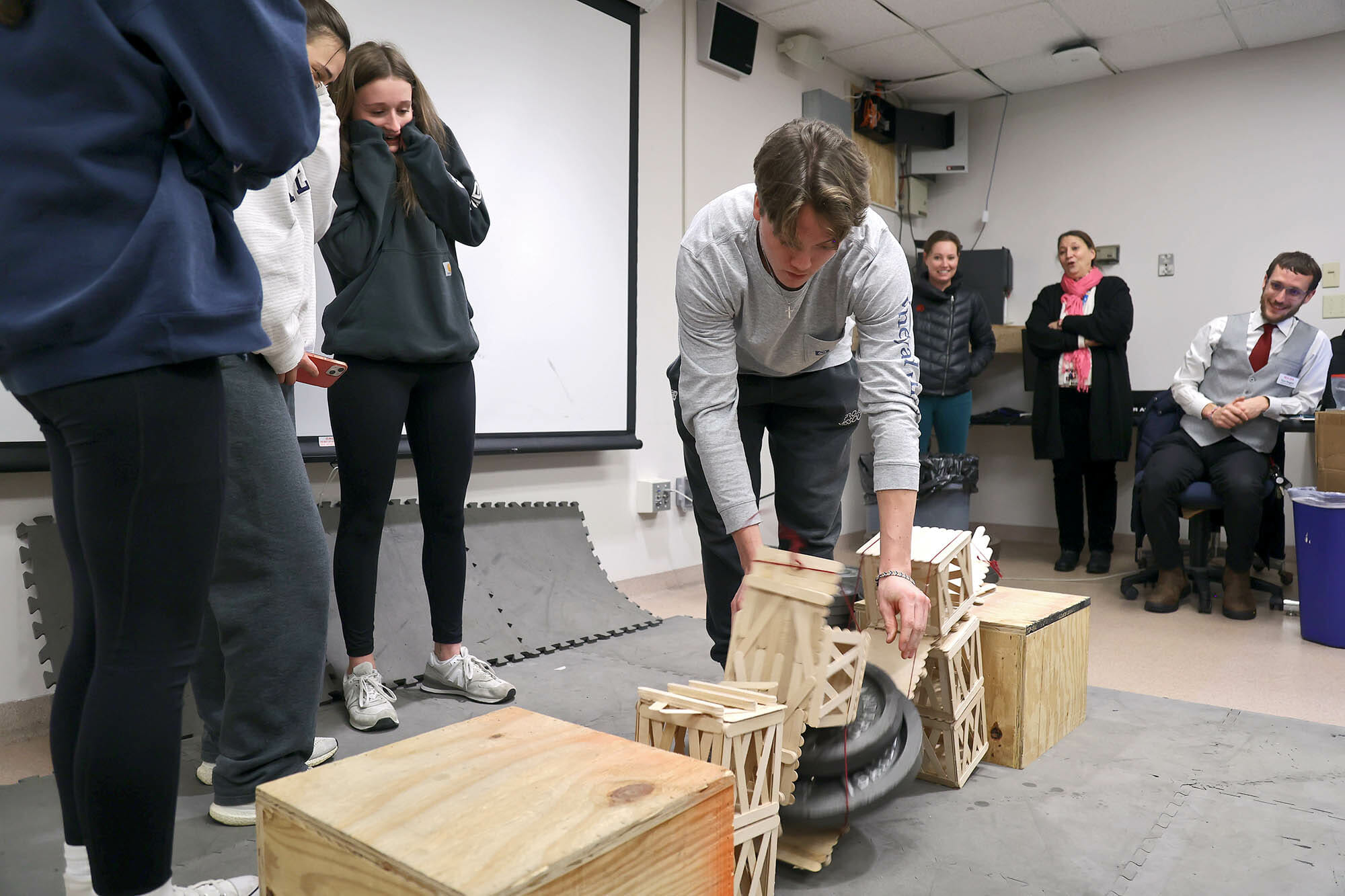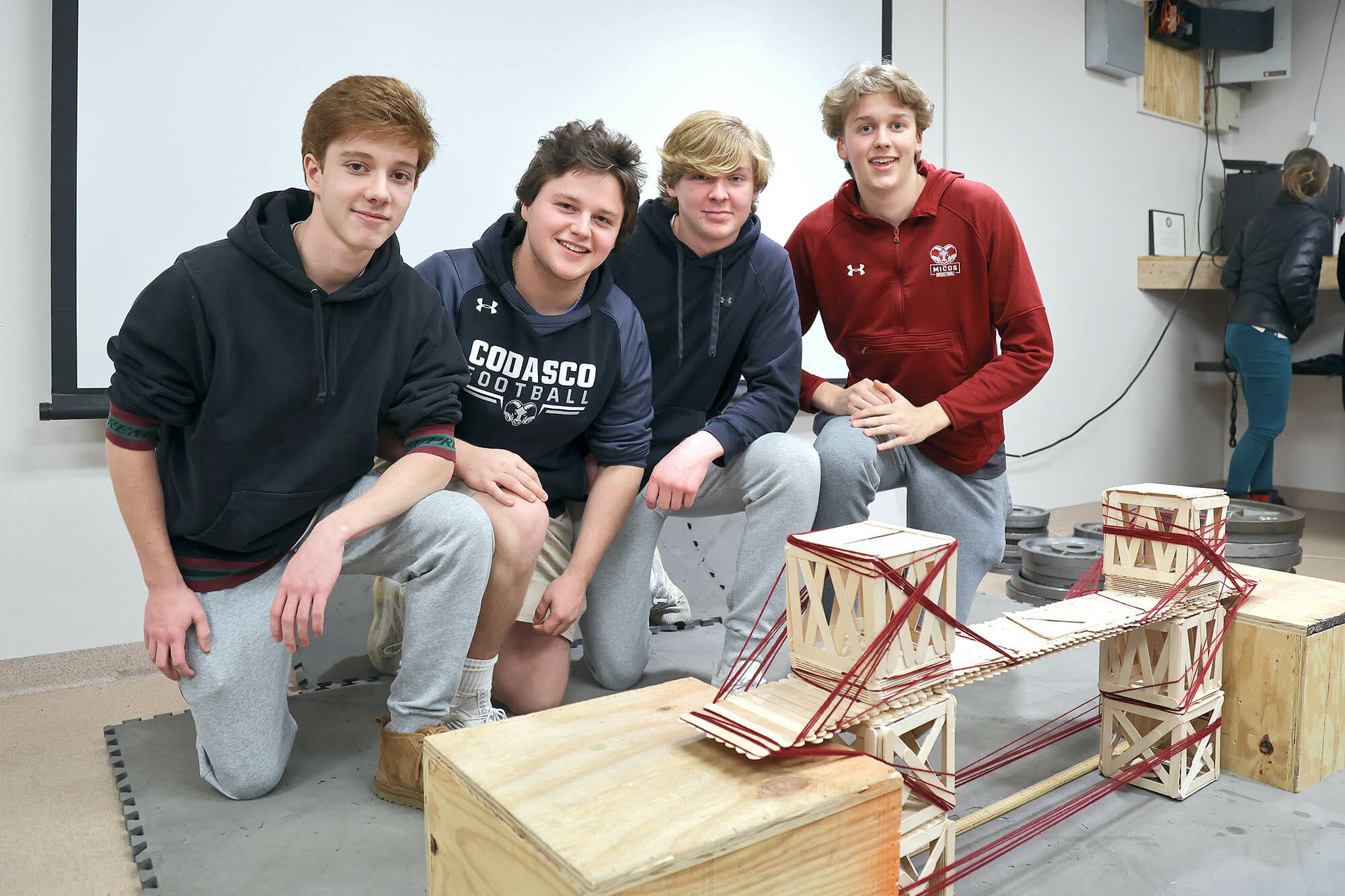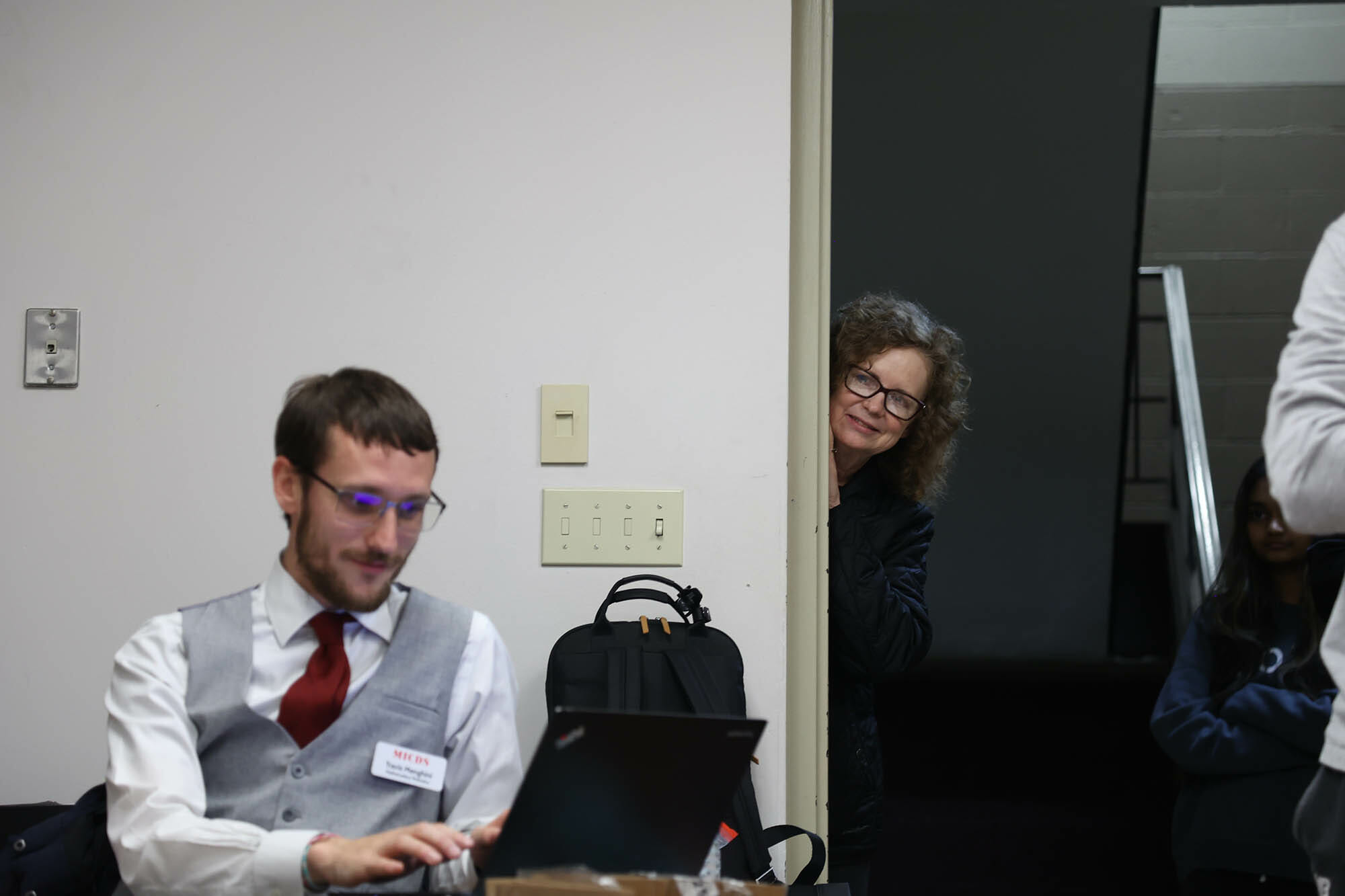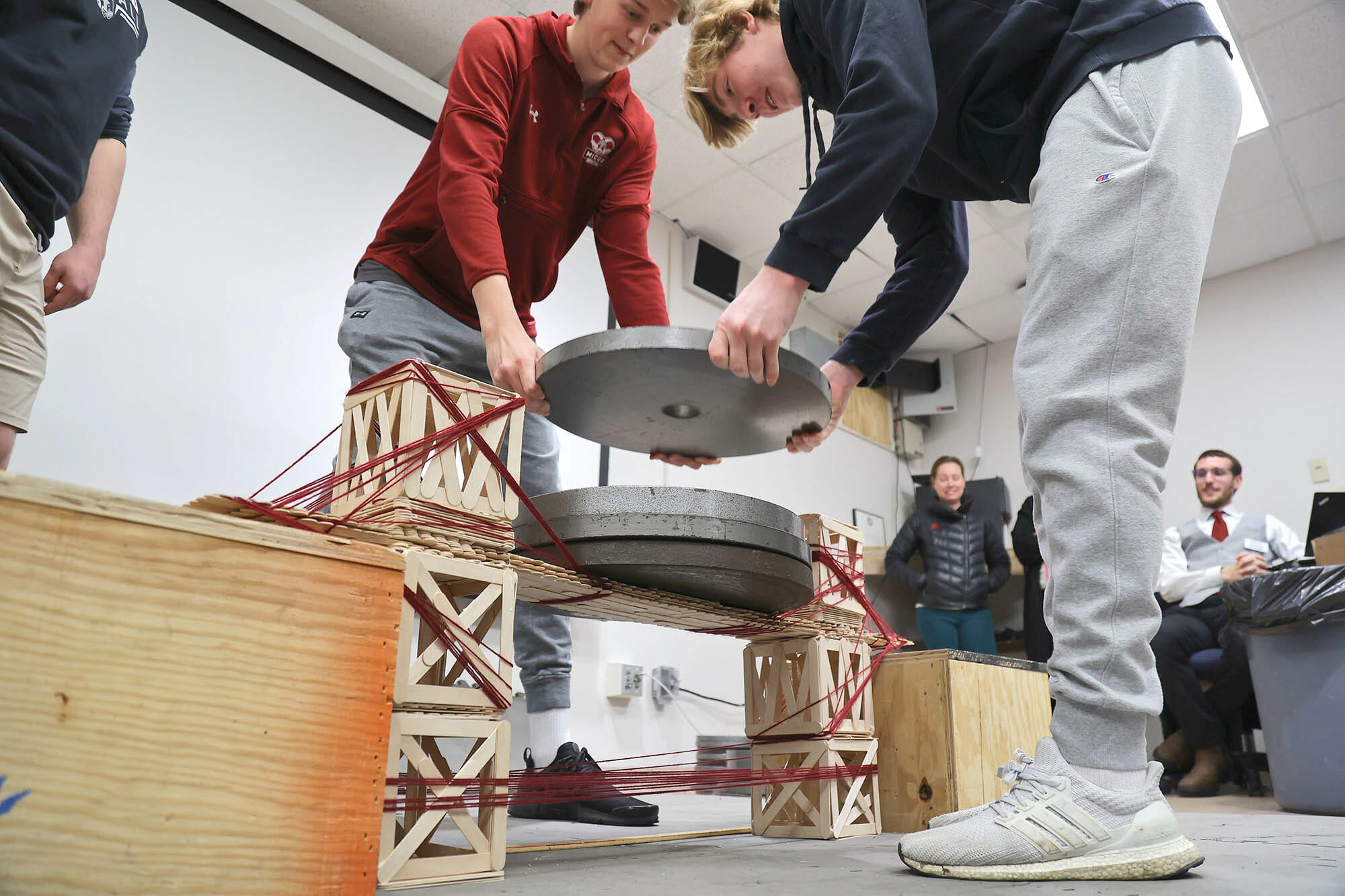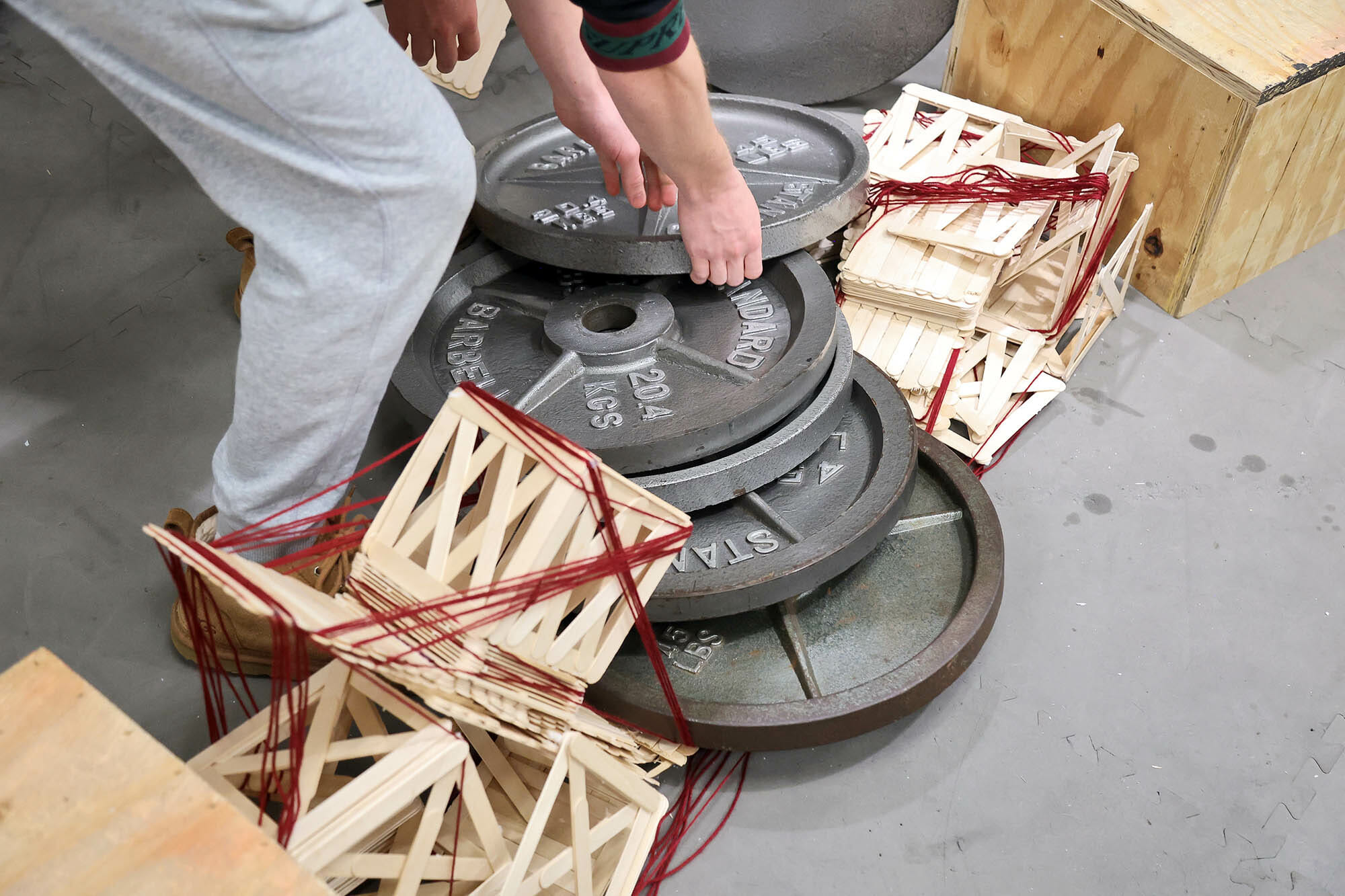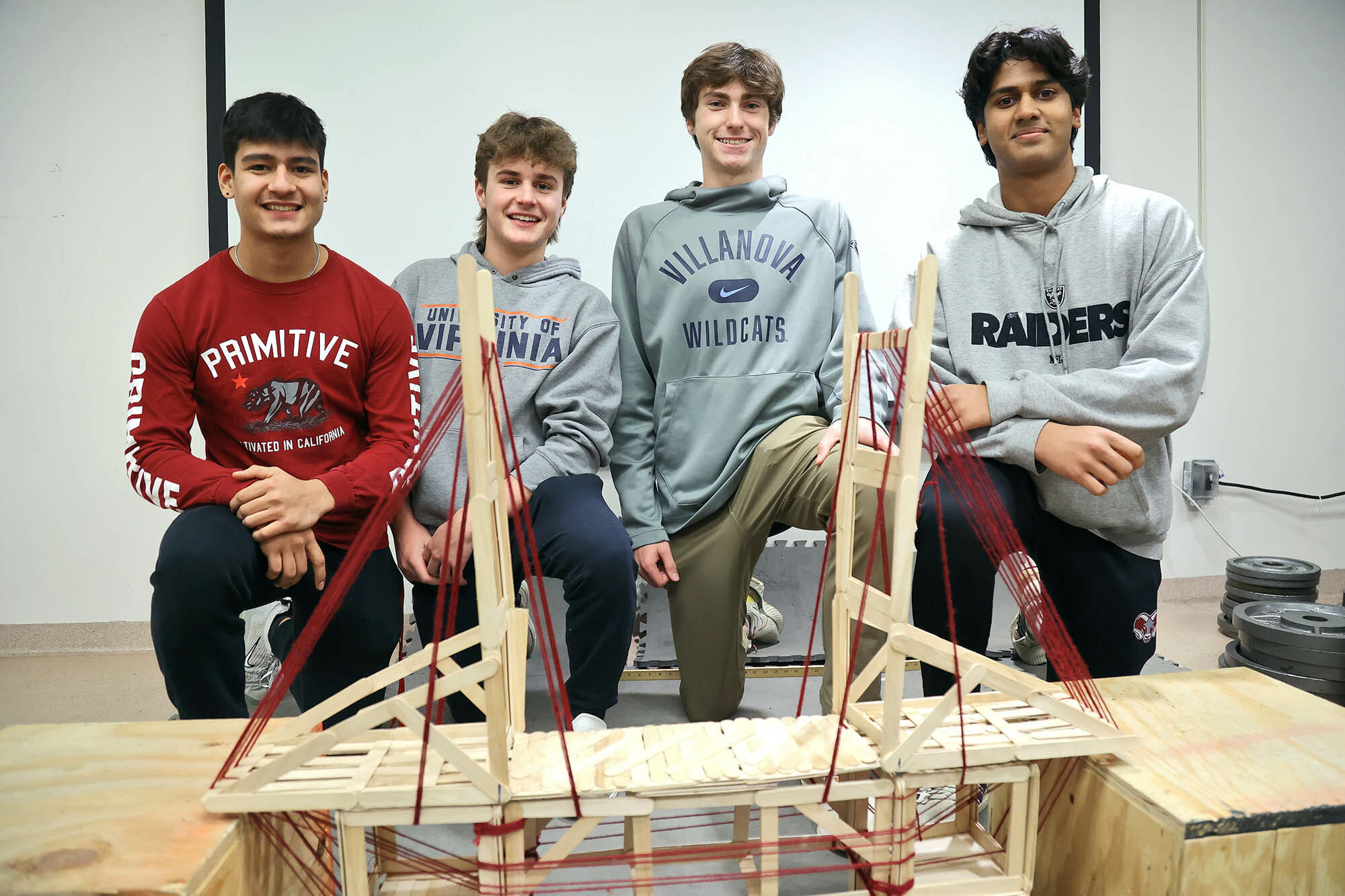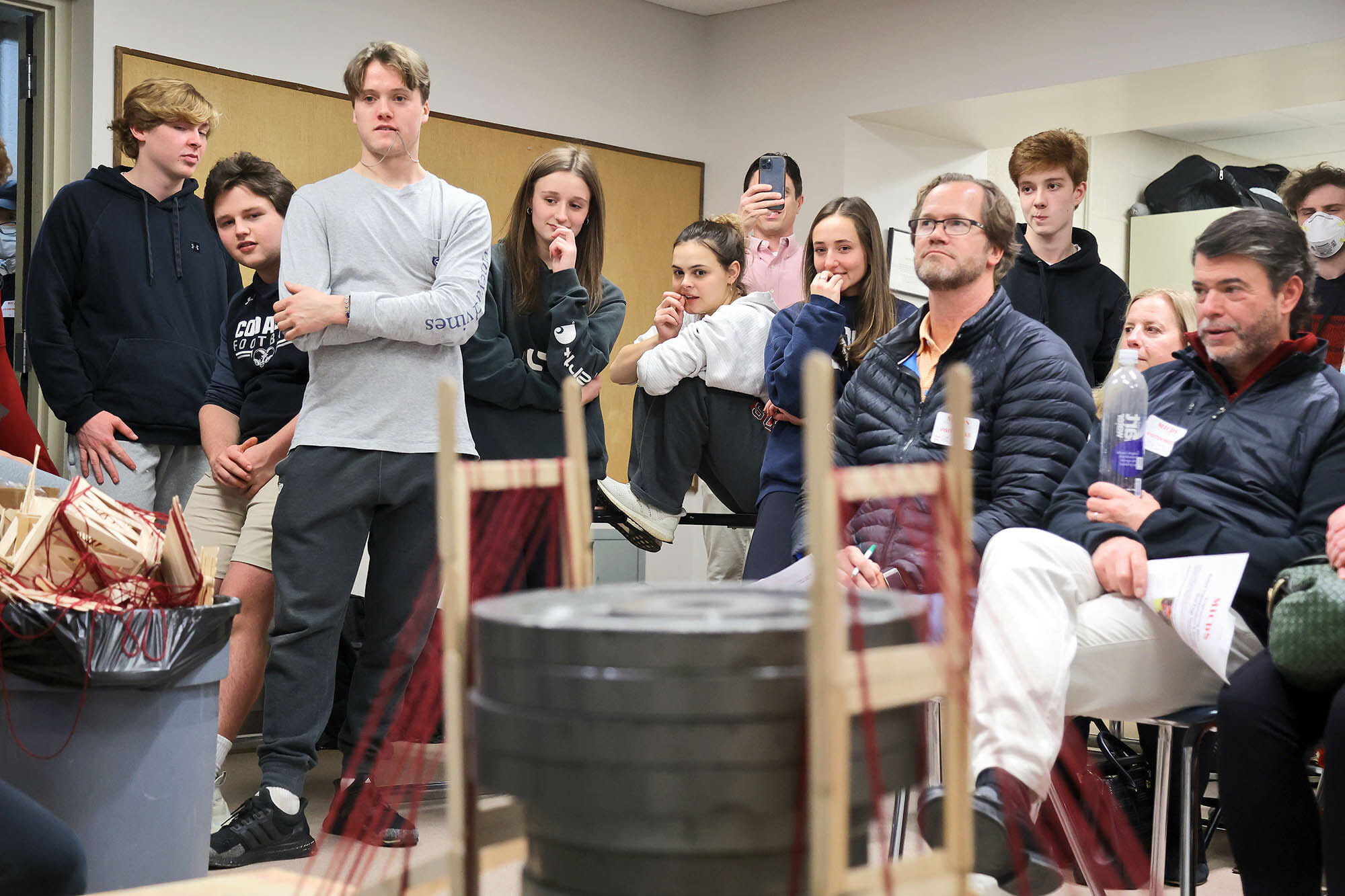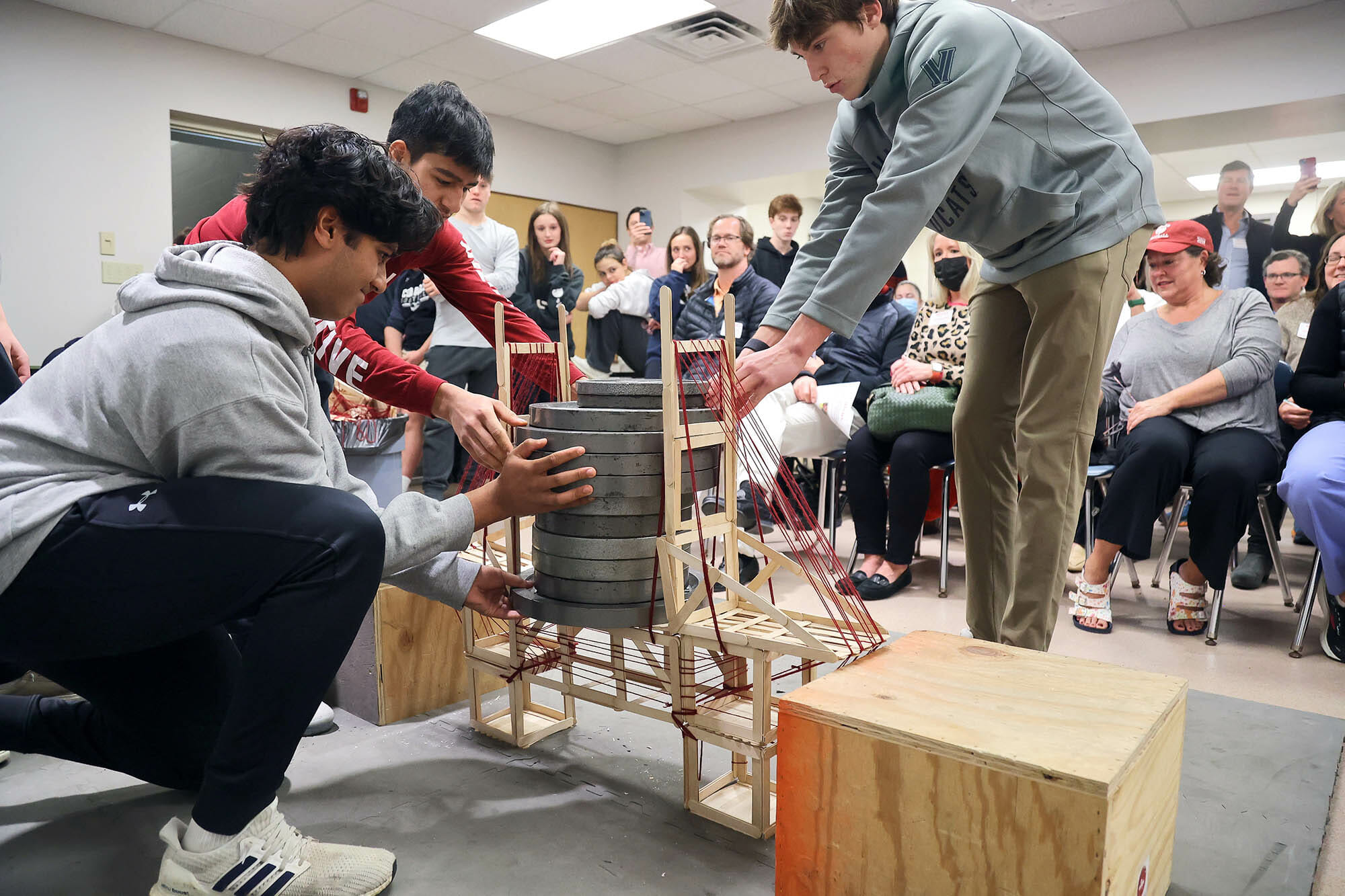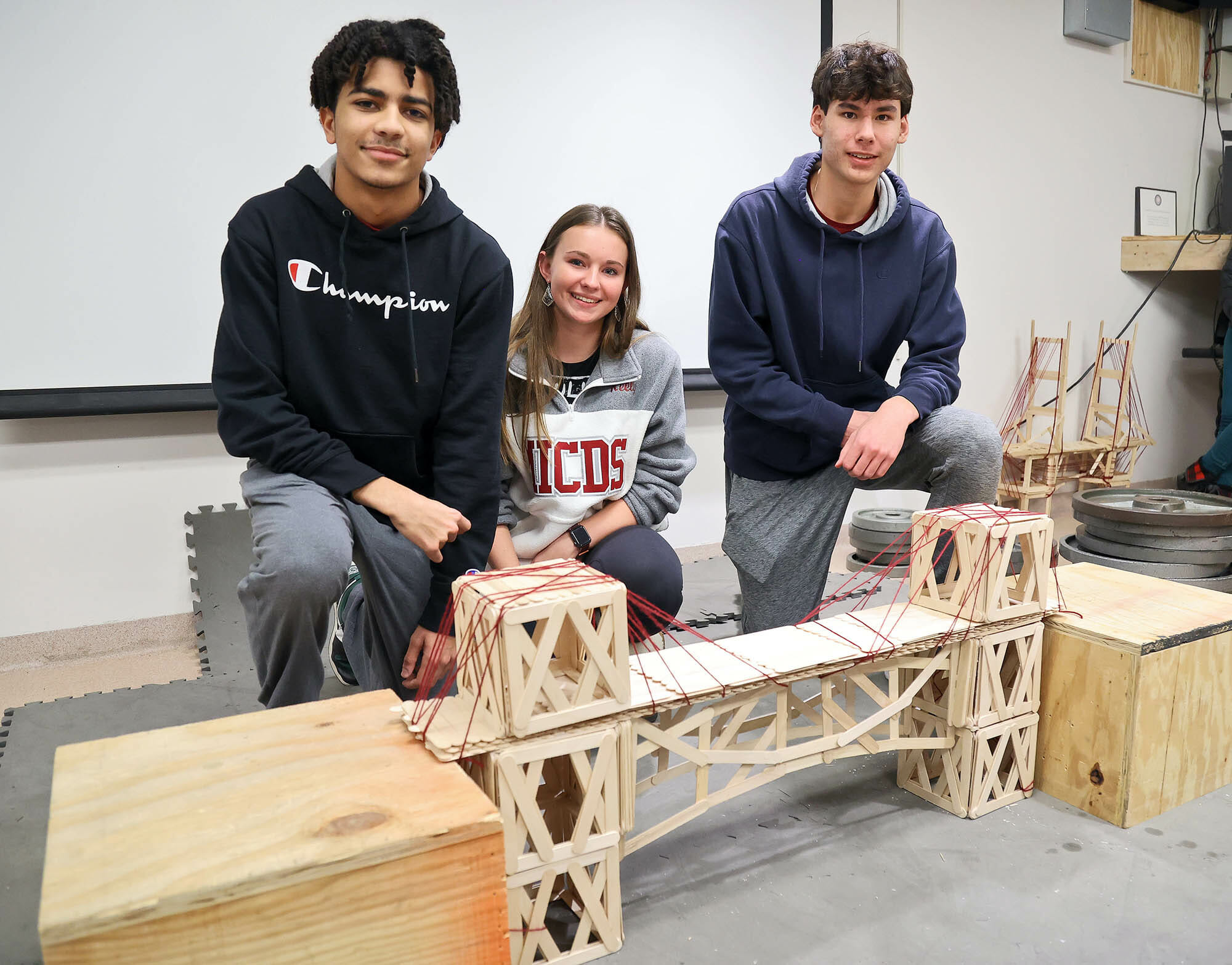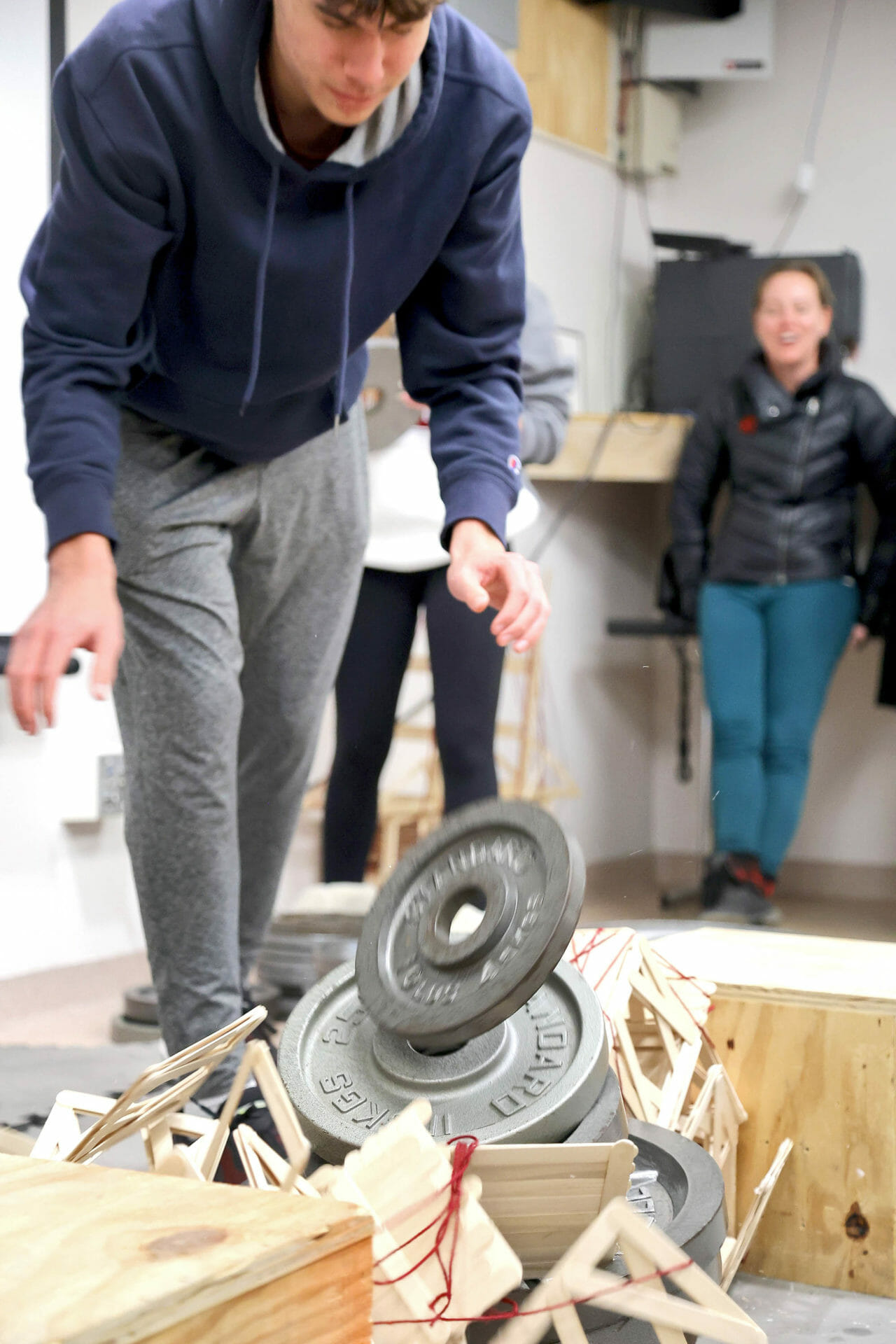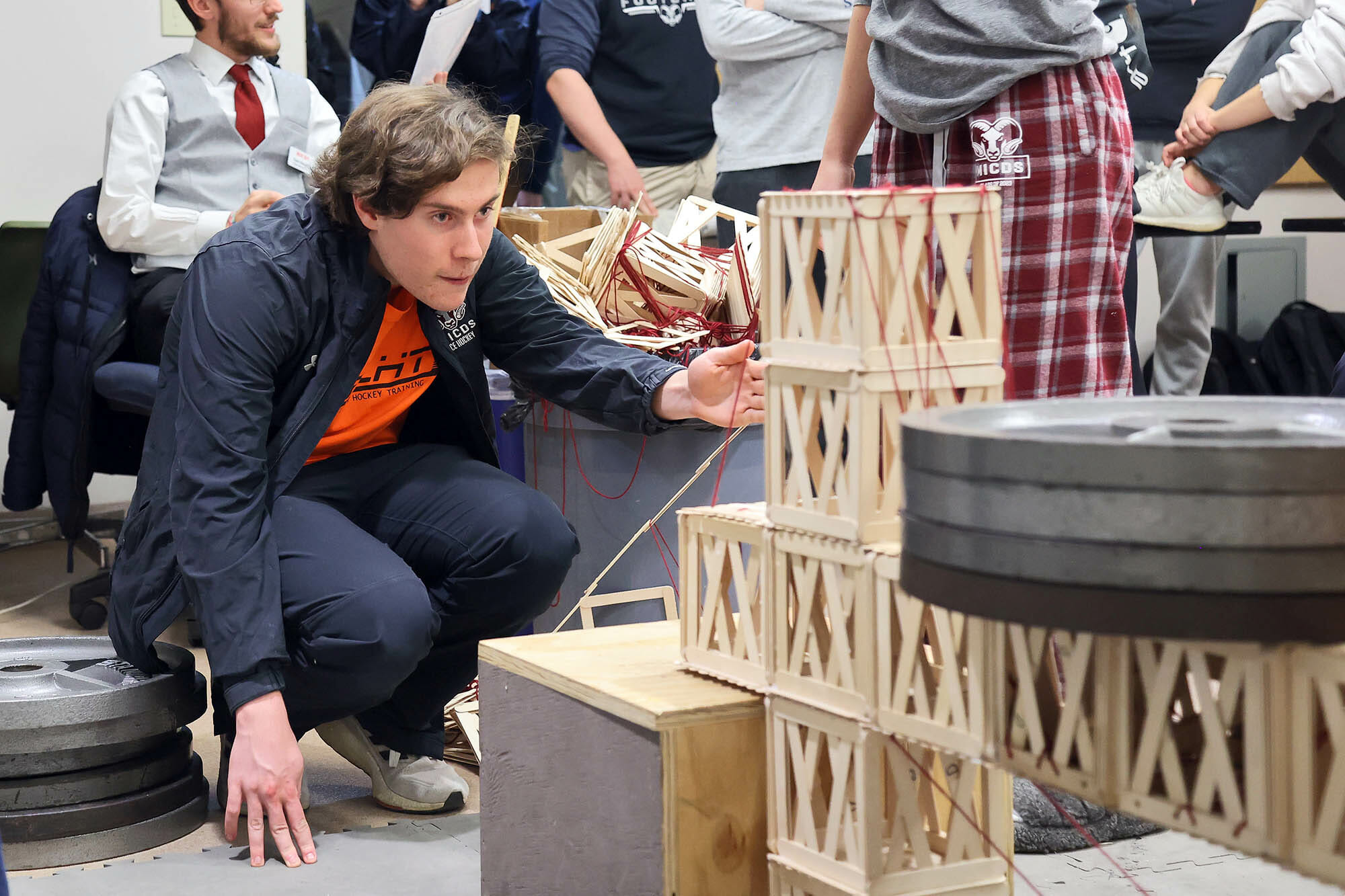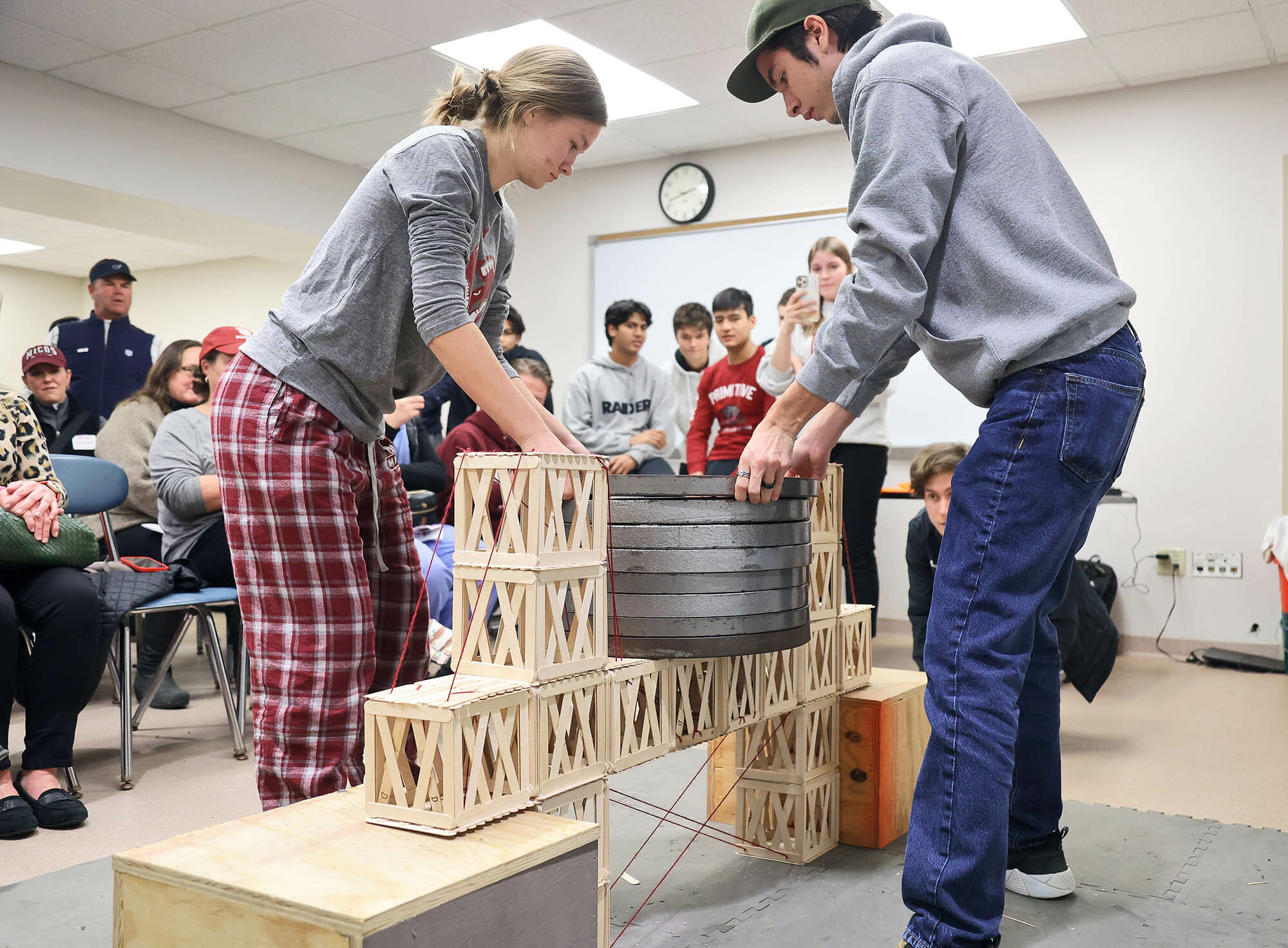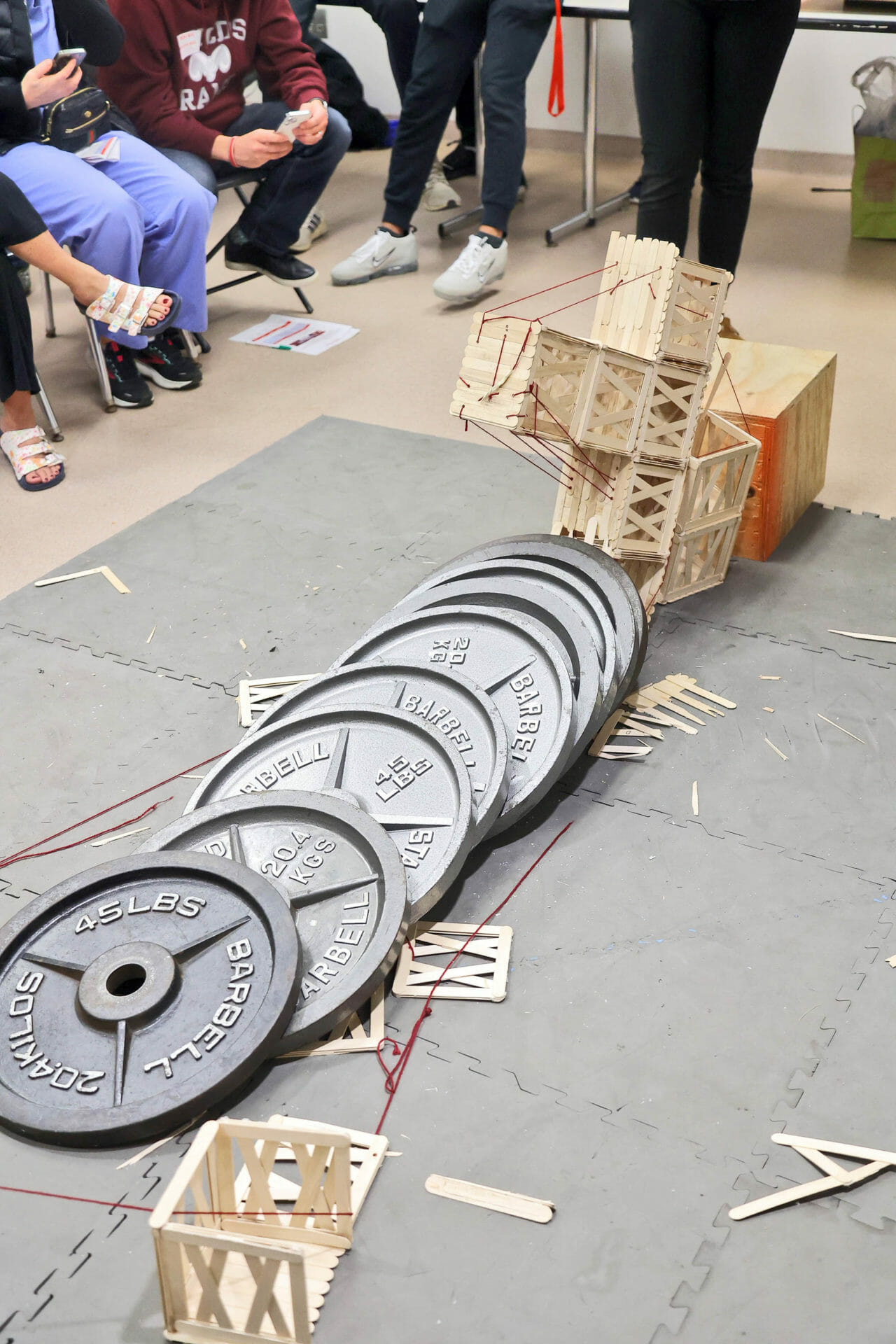Imagination and engineering are a potent combination for building structures that connect, support, delight, and entertain. Seniors in the Upper School Engineering Science class recently launched two projects. One involved simple craft materials designed to hold heavy weights, and the other saw amusement park, car wash, and trolley dreams come to life.
Guided by Upper School Math Teacher Travis Menghini, seniors first embarked on a railed transportation project. Using CAD, students designed and built models of railed transportation such as trolleys, roller coasters, trams, and more. Not only did they have to construct a type of vehicle, but they also had to create a track for it to run on. In the design process, they needed to explore if the transport project has a historical or environmental context, its purpose, if it turns, switches tracks, encounters slopes, its power source, and if the track prevents derailment. For the final presentation, they provided technical design documents, a cost analysis, and creative dioramas showcasing their final design, construction, and function.
For the second project, and only using materials found in a typical kindergarten classroom, seniors in the Upper School Engineering Science class had a mission: to construct a strong, lightweight, one-of-a-kind bridge. The challenge was they could only use popsicle sticks, glue, and yarn. Students needed to research, brainstorm, design, and execute a technical drawing, prepare a cost analysis, build, test, retest, redesign, and test again for a bridge that could hold upwards of 400 pounds. The bridges were then evaluated on strength, design aesthetic, and strength-to-weight ratio.
For strength, it’s the responsibility of the engineers to ensure that their bridge design is safe. One safety measure is determining the maximum live load the bridge can support. As for aesthetics, most people prefer an attractive, creative, and inspirational bridge design. If a bridge is solid but unattractive, that design will likely not be selected over other, more innovative designs. Engineers never have the luxury of unlimited funding, time, and talent. Customers are looking for the strongest, most functional, and the most attractive bridge they can build within their budget and time constraints. If it looks good and is sturdy enough, the live load test is where the rubber meets the road.
Students worked in small groups and were determined to beat the 2019-2020 record of the highest static load of 635 pounds. While this year’s winners didn’t hit that record, the team of Samuel Fontana ’23, Maggie Johnson ’23, AJ Turnell ’23, and Isabelle Wood ’23 built a bridge that held 405 pounds, with a strength-to-weight ratio of 48.5.
“In the beginning, it was hard for us to decide on the design of the deck,” said Johnson. “We kept switching what we wanted to do, but I think we made the right decision. Another challenge was building the deck. It was very tedious, and we were unable to get the connections we wanted between trusses. I enjoyed making the bridge, testing it, and seeing how much weight the other bridges could hold.”
Wood shared, “I really enjoyed getting to research what makes bridges sturdy and successful and it was really rewarding to create a bridge that held so much weight. The most challenging part of this project for me was making sure there were the least amount of weak points possible. It felt like we would develop a design for our trusses and then discover a more effective way to make them so we would have to redesign. The project consisted of lots of discovery and creativity and problem solving and those are the aspects of this project that strengthened my understanding of engineering. Though I expected our bridge to hold more weight, the fact that it held over 400 pounds is so incredible and something that I’m proud of.”
Menghini said, “I am very impressed by my students’ work this semester. The railed transportation project was a new addition to the class and required students to think outside the box and be creative. Students were not only challenged with the construction of a railed apparatus but also with CAD using a program called OnShape. Along with the bridge, these two projects were a cumulative test of students’ knowledge and the engineering design process. In addition, the makerspace 3D printers, laser cutters, saws, and other equipment enhanced the new software they used. Overall, the class exceeded my expectations!”
Congratulations, engineering students, on stretching your imaginations and scaffolding your learning to new heights!
